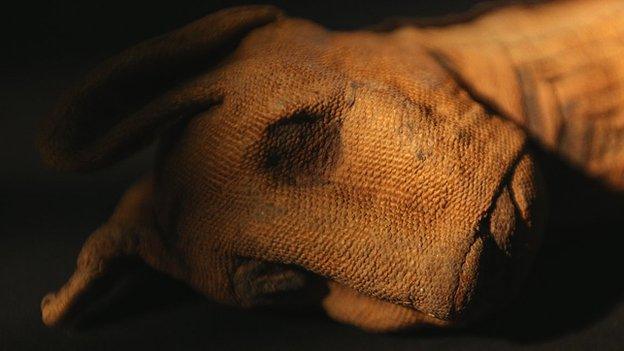70 million animal mummies: Egypt’s dark secret
- Published
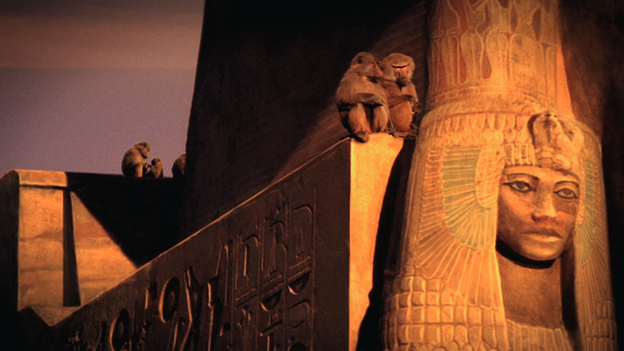
Animals played a key role in Ancient Egyptian belief
The Ancient Egyptians didn't just mummify their dead human ancestors, they also mummified animals - in their millions.
It's possible up to 70 million animals were mummified and then buried in underground catacombs at over thirty sites across Egypt.
At the Royal Manchester Children's Hospital a team of radiographers and Egyptologists from the Centre for Biomedical Egyptology at Manchester Hospital have been using the latest medical imaging technology to scan hundreds of animal mummies, removed from Egypt during the 19th and 20th centuries.
It's the biggest survey of its kind in history.
Over three nights in Autumn 2014, Horizon filmed around a dozen of these scans which have made the backbone for a documentary that tells the strange story of the bizarre role animals played in ancient Egyptian belief.
Dr Lidija McKnight lead the Manchester team of Radiographers and Egyptologists. They used a CT Scanner and X-ray machine, that would normally be used on children, to see beneath the wrappings without damaging the ancient specimens inside.
Scaly surprise
The team scanned a variety of different types of animal mummies from wading birds and falcons to cats and shrews and even a five foot long Nile crocodile.
The team got a surprise when they discovered that a crocodile shaped mummy contained not just one crocodile but eight baby crocs carefully wrapped together.
The scanning wasn't easy to film as each delicate mummy needed to be handled as little as possible and we stopped filming as soon as an emergency human patient needed to use the scanner (which happened a few times).
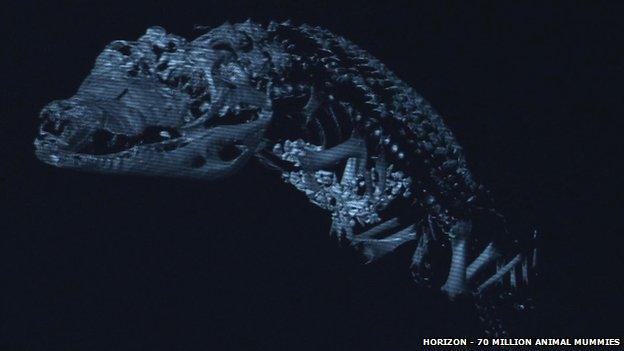
Some scans have revealed the contents of animal mummies in exquisite detail
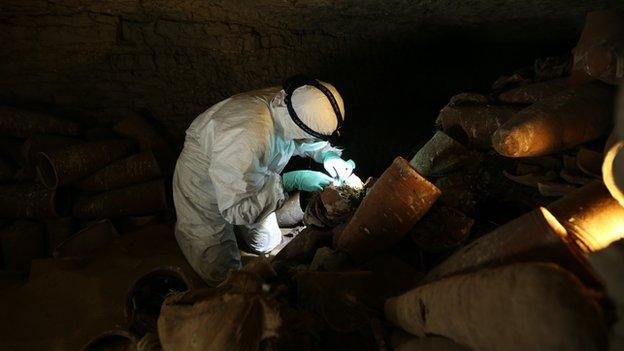
This catacomb contains about two million mummified ibis birds
But the final scan the team did was perhaps the most interesting. The outside of the mummy was shaped like a cat, with tiny ears and a nose, but the scans revealed something that had remained hidden since it was made thousands of years ago, only a few pieces of cat bone were inside the wrappings.
Lidija explained around a third of the animal mummies she scanned contained partial remains or even looked completely empty.
The reason why is hotly debated, some experts suggest animal mummies were being made to be sold to Egyptian pilgrims and so the ancient embalmers could make more profit by selling "fake" mummies, others like Lidija believe its evidence the ancient embalmers considered even the smallest parts of the animals to be sacred to went to just as much efforts to mummify them correctly.
As well as our UK filming, we travelled to Egypt to visit the ancient underground tombs where many of these animal mummies were found.
Desert cemetery
Saqqara is an ancient Egyptian temple complex around an hour's drive from Cairo where millions of animal mummies are still buried.
We filmed molecular biologist Sally Wasef from Griffith University, Australia as she clambered down a narrow twelve metre deep shaft into an underground catacomb filled with the ancient mummified remains of wading birds called Ibis.
Sally collected samples of bones from the mummies so she could extract and compare their DNA, helping her to understand whether they had been intensively farmed.
We also followed Dr Paul Nicholson from Cardiff University, who's been mapping and excavating the Saqqara site for over 20 years.
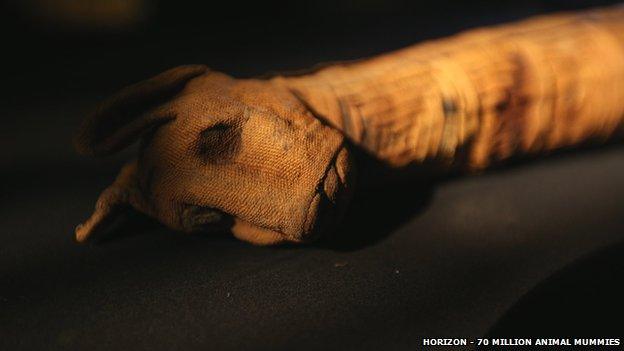
About a third of the mummies scanned by the Manchester team do not have any animals inside
Paul took us deep under the desert to explore a network of tombs where up to eight million mummified dogs had been buried.
Egyptologist Professor Salima Ikram from the American University in Cairo has studied these mummified dogs and showed us how their bones contained evidence they were bred and then killed to be mummified.
In fact at one time, animal mummification was such a massive industry in Ancient Egypt that animals were intensively bred in their millions to satisfy what had become a national obsession with animal mummification.
Horizon - 70 Million Animal Mummies: Egypt's Dark Secret, will air on BBC 2 on Monday 11 May at 2100.
- Published11 May 2015
